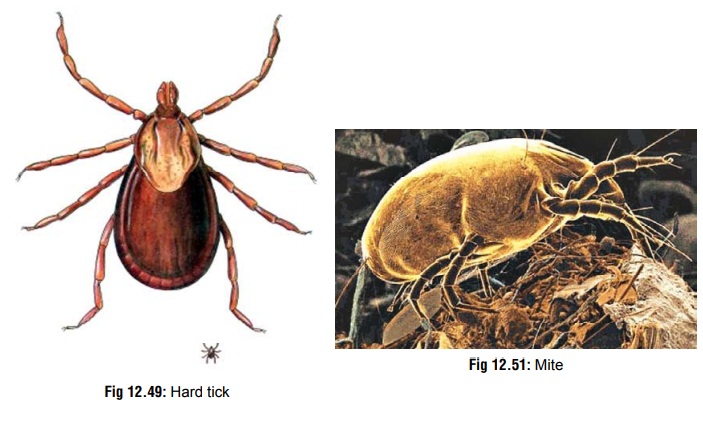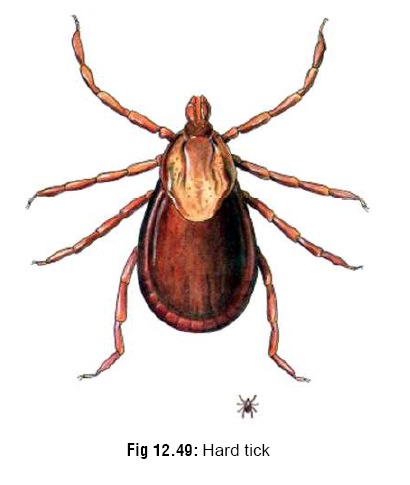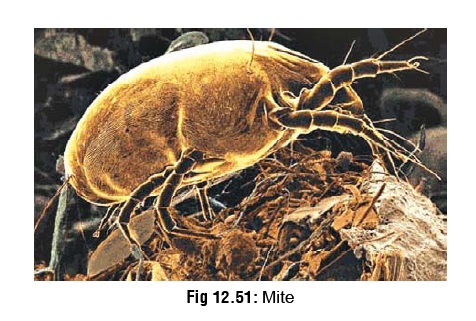Chapter: Modern Medical Toxicology: Organic Poisons (Toxins): Venomous Bites and Stings
Ticks and Mites - Venomous Creature

TICKS AND MITES
Ticks and mites belong to order Acari of class Arachnida. Adult females of about 30 species of hard tick (family Ixodidae) (Fig12.49), and immature forms of 6 species of soft tick (family Argasidae) (Fig 12.50) are responsible for inducing humantick paralysis.


Ticks
are often picked up from domestic animals, espe-cially dogs, and they attach
themselves in some hairy part of the body such as scalp, or in and around
crevices or orifices. After attaching itself by means of a barbed hypostome,
the tick introduces a salivary toxin and begins to engorge itself with the
victim’s blood. Five to six days later, a progressive, ascending lower motor
neurone paralysis develops, with paraesthesiae. Most victims are children. The
toxin acts by causing presynaptic neuromuscular block and decreased nerve
conduction velocity.
Treatment
involves locating the tick and detaching it without squeezing. For this
purpose, it can be painted with ether, chloroform, petrol, kerosene, or turpentine,
or prised out between the partially separated tips of a pair of small curved
forceps. In most cases, detachment of the tick leads to complete recovery. But
sometimes the condition keeps worsening and death results. Such cases respond
to administration of specific antivenom.*
Gastrointestinal illness has been reported in children who handled the mite Holothyrus coccinella (Fig 12.51) and then placed their fingers in their mouths. Skin reactions and irritation in humans is seen from a number of different mites including Dermanyssus gallinae (chicken mite), Ornithonyssussylviarum (northern fowl mite), Ornithonyssus bacoti (tropicalrat mite), Allodermanyssus sanguineus (rodent mite), and Rickettsia akari. Respiratory allergies due to house dust mitesare fairly common. Rhinitis and extrinsic asthma are caused by house dust mites (Dermatophagoides species) The scabies mite is antigenic and stimulates autoantibodies leading to a pemphigoid-like reaction. Scabies may mimic other skin disorders also: contact dermatitis, scalp dermatitis, and gener-alised urticaria.

Related Topics